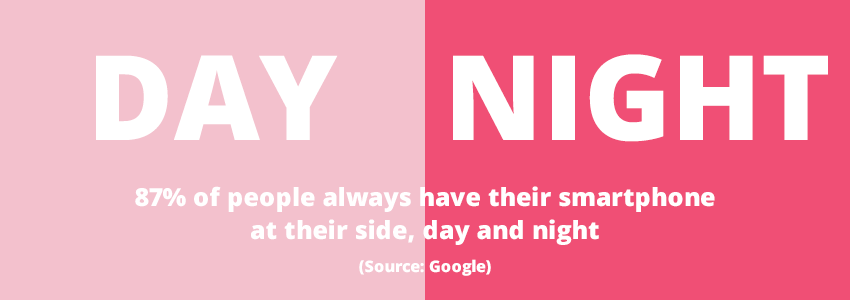The easiest and most effective way to communicate with your customers is through SMS, it takes around 5 seconds for your message to be delivered and because smartphones are now capable of almost everything, our mobile phones never leave our side so using SMS to communicate with your customer base is the perfect medium.

Using SMS to build a relationship with your customers means when it comes to asking them about how happy they are with you, sending them an SMS survey won’t come as a surprise.
SMS surveys provide businesses with an easy to use solution for obtaining feedback from customers and helping businesses to improve on what they do. Because SMS surveys are being sent through SMS, it provides the most efficient and convenient way to attain information from customers.
Consumers don’t want to spend time filling in long questionnaires, so ensuring you ask the right questions that both make it easy for them to answer, whilst giving you enough information to analyse and improve your business on, can be hard. Questions that are too long mean your customers won’t bother to answer them, too short and simple, and you won’t get the right data.
Asking the right questions is hard, which is why we have come up with some example survey questions below. All questions are under 160 characters therefore only costing you 1 credit to send.
Open-ended questions
Using open-ended questions in your survey are a great way to delve deep into what your customers really think. They are great as you can ask the question of ‘why’ giving the user freedom to give an in-depth and honest answer.
- “What do you like the most about the service we offer?”
- “Why did you attend our latest event?”
- “If you could change anything about what we do, what would that be?”
- “Why did you choose us over someone else?”
- “Do you have any other comments, questions, or concerns?”
Pros: Respondents can define central issues
Cons: Difficult to analyse results, can be time-consuming for respondents
Yes or no questions
Yes or no questions are far easier for the recipient to answer and can give you data to analyse. If all you want to know is if they would buy from you again, recommend you to a friend, or merely ask if they are happy with you, then asking your customers to reply with a yes or no is perfect.
- “Were we able to fix the issue you raised in a timely manner? Yes/No”
- “Reply Yes or No – Did you find the purchasing process quick and easy?”
- “Are you planning on using our service again for future events? Reply with yes or no.”
- “Did you find out all the information you needed? Please reply Yes or No”
- “Would you come back and stay another night? Reply Yes or No”
Pros: Quick and easy, can analyse results, does not allow for ambiguous answers
Cons: Unable to determine how strong each answer is (could be a strong yes or strong no)
Multiple choice questions
If you require more information than what a yes or no question can give you, providing recipients with a couple of answers that they can chose and reply with is just as easy. Multiple choice questions give the respondent more freedom whilst allowing you to easily analyse the answers.
- “Which of the following options best describe us? Reply with all that apply (Corporate, Professional, Informal, Fun, Reliable, Unreliable, Low cost, Expensive)”
- “How often would you see yourself using our software? Never, Sometimes, Often, All the time”
- “How much do you agree with this statement – You feel like a valued customer? Strongly Agree, Agree, Neither Agree nor Disagree, Disagree, Strongly Disagree”
- “What time of the day do you mainly use our website? Select from; Morning, Afternoon, Evening.”
- “What other services are you interested in? Reply with; IT Management, Cloud Solutions, Computer Hire, Cyber Security, Interesting in all, Not interested in any”
Pros: Easy to answer, allows you to easily compile and analyse results
Cons: May not give the respondent the answer they want
Rating scale questions
Rating scales are great for both the respondent and the surveyor. It gives the respondent a wide range of choices to pick from and business are easily able to analyse the results. You will need to make sure you explain the scale in the question, leaving it to the user to guess would render the question meaningless with different perceptions of what number is good and bad.
- “On a scale of 1-5 how clean was your room on arrival, 1 = Very dirty 5 = Very clean”
- “From 0–10 how likely is it that you would recommend us to a friend or colleague? (0 = Not at all likely, 10 = Extremely likely)”
- On a scale of 0 (Poor) to 10 (Excellent), how would you rate our products you’ve used?
- “Using the scale 1 (Extremely slow) to 10 (Extremely fast) how would you rate the speed in which your support case was fixed?”
- On a scale of 1 to 5, how satisfied are you with your order? (1 – Totally Dissatisfied, 5 – Totally Satisfied)
Pros: Easy to analyse data and compare answers
Cons: Can be hard to gauge the meaning of an answer (one person putting 7 may mean they loved the product, but someone else’s 7 could mean they were indifferent)
When creating your own survey, it is best to include open and closed questions. This gives you a good variety of areas you can cover and allows your customers to give you feedback that you can really analyse and use to improve your services with.
We hope these example survey questions helped you and remember to always include a closing message to thank your customers, they have spent time filling out your survey and the least you could do is thank them for it.
